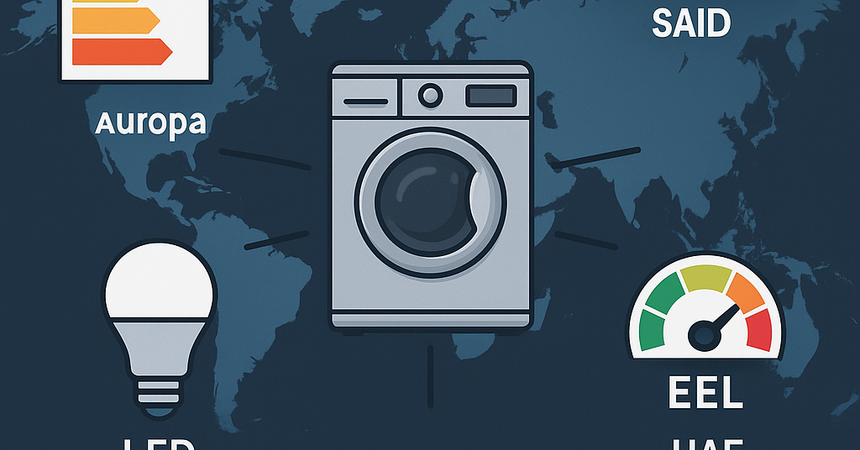Energy efficiency labeling is not just a market preference — in many countries, it’s a legal requirement. Whether you're shipping electronics, appliances, or lighting, your product might fall under Energy Efficiency Label (EEL) regulations. In this article, we’ll explain how to determine if your product needs EEL, and how WorldWideBridge can support you through a seamless, compliant process — from start to finish.
1. What Is an Energy Efficiency Label and Why Does It Matter?
An Energy Efficiency Label indicates how energy-efficient a product is, based on specific performance criteria. These labels are mandatory in regions like the EU, UAE, Saudi Arabia, South Korea, Kazakhstan, and others. They help consumers make informed choices and push manufacturers toward greener technology.
Each country has its own classification system, but the goal is the same: tested, rated, and clearly labeled products only are allowed on the market.
2. Which Products Require EEL?
The list of regulated items varies by country, but common categories include:- Home appliances: refrigerators, air conditioners, washing machines, TVs, water heaters.
- Commercial equipment: elevators, chillers, compressors.
- Lighting: LED lamps, luminaires.
- Office electronics: monitors, printers, laptops (depending on jurisdiction).
3. How to Check If Your Product Needs an EEL?
You’ll need to consider:- Target country or region
- Product category based on official lists
- Applicable regulations and technical standards
- Test results from accredited labs
- Packaging and labeling requirements
Full-Service EEL Support from WorldWideBridge
Navigating labeling laws across multiple countries can be overwhelming — but not with us. We offer full-cycle support for energy labeling compliance.Our services include:
- Identifying if EEL is mandatory for your product
- Finding the right standards and testing protocol
- Coordinating lab tests in accredited centers
- Issuing energy efficiency reports or certificates
- Designing and validating compliant labels
- Ensuring customs and retail acceptance
